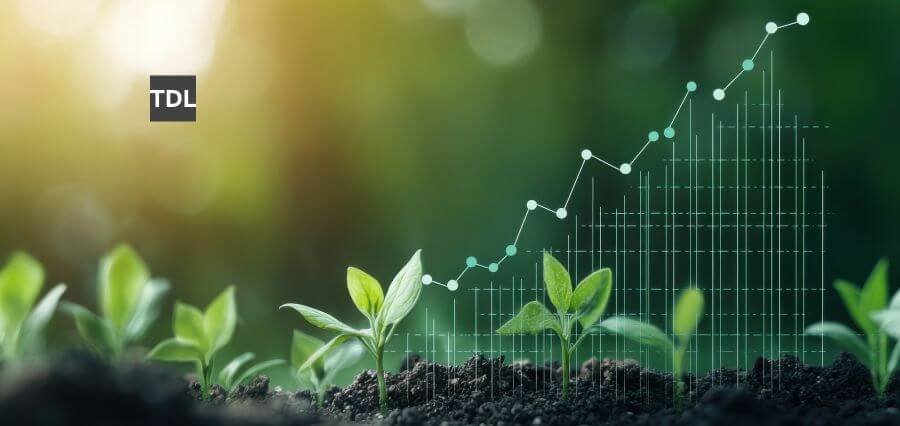Green economy is emerging as a global force as societies respond to the twin challenge of ecological degradation and economic imbalance. Described as low-carbon emissions, sustainable use of resources, and inclusive growth, the green economy aims to re-shape old models of economics, which have been oriented too long towards profit over the planet. Under this new paradigm, sustainability is not only an ethical imperative but a strategic imperative for long-term success. With the world policies changing, investments change, and customer demand patterns change, fresh trends are being developed that can remake economic spaces.
This article outlines three interrelated and transformative trends poised to shape the future of the green economy: the adoption of circular economy models, the rapid expansion of green growth, and the integration of sustainability into financial systems.
Circular Economy Models
Perhaps the most transformative shift in the green economy is the shift to the circular economy approach. In contrast to the pervasive linear economic system that is a “take, make, dispose” culture, the circular economy is meant to be restorative. It is focused on keeping materials, products, and resources in use for as long as possible and therefore reducing waste and environmental footprint. This strategy not only helps overcome the scarcity of resources and pollution of the environment, as it generates new economic opportunities because it unleashes value from potential waste.
Major industries already begin to rethink production and consumption models. In the fashion industry, for instance, companies start decoupling from fast fashion towards more sustainable production models around quality, repairability, and recyclability. The electronics industry is creating modular products that are easier to refurbish and designed for longer lifetimes. Leasing, remanufacturing, and product-as-a-service business models are also on the rise. These kinds of models minimize material usage while allowing for long-term customer relationships and recurring revenue models. Public policy and regulation are assisting with the rate of change in this direction.
Emerging Green Technology and Innovation
Technological innovation is spearheading a green economy transformation at its center. From green energy networks and intelligent grids to industrial clean procedures and electric vehicles, green technology is changing business models, infrastructure, and everyday life. Green technologies not only protect the environment but also enhance economic efficiency and international competitiveness. Renewable energy technologies have evolved rapidly and sharply reduced prices over recent years. Solar and wind, previously perceived as costly substitutes, are now among the lowest-cost electricity sources in much of the country. Technologies for energy storage, such as lithium-ion batteries, have become good enough to be utilized to more effectively incorporate renewables into national grids. Smart grid and demand-response technologies are allowing utility companies to better manage energy supply and demand and lower emissions.
Innovation is also transforming industries like agriculture, construction, and transportation. In agriculture, precision agriculture technology based on artificial intelligence, drone imaging, and sensor networks is optimizing the utilization of resources and maximizing crop output while minimizing waste. In the construction sector, the utilization of green materials like recycled steel, bamboo, and low-carbon concrete is minimizing the environmental impact of buildings. Green architecture with the applications of passive design methods and efficient energy technologies is the new norm in urban development. The transport industry too is undergoing a complete transformation. The electric vehicles (EVs) market is expanding fast with the thrust from government incentives, infrastructure investment, and changing consumer habits.
Integrating Sustainability in Finance and Investment
A fundamental change is occurring in the financial industry as sustainability is becoming a part of investment planning, risk measurement, and capital deployment. Environmental, Social, and Governance (ESG) factors are now essential to investors who want to align financial performance with long-term sustainability. This movement is a wider acknowledgment that environmental risks are also financial risks. Green bonds, sustainability-linked loans, and climate-focused funds are employed as investment tools to channel capital into green projects. Green bonds, for example, renewable energy infrastructure is funding sustainable transport and energy-efficient buildings.
The record issuance of green bonds in 2024 was seen, report the Climate Bonds Initiative, highlighting investor demand for the sustainability sector. Regulatory agencies and central banks are also going green. Over 140 central banks and financial supervisors are forming the Network for Greening the Financial System to craft methodologies for integrating climate scenarios into risk analysis. More companies are implementing disclosure frameworks like the Task Force on Climate-related Financial Disclosures (TCFD) to provide better visibility into environmental performance and resilience to investors. At the corporate level, sustainability is increasingly becoming a corporate strategy. Various businesses are committing net-zero emissions, science-based targets, and frequent ESG reporting.
Conclusion
The transition to a green economy is now a global imperative that is redesigning the way we work, prosper, and live. With environmental issues converging with economic interests, countries and businesses are realizing that they need to put sustainability at the heart of development planning. The trends evident here—the emergence of circular economy models, turbocharging of green technologies, and financial mainstreaming of sustainability—are converging to build an economy which is both sustainable for the environment as well as socially inclusive. This change will not be simple. It will be a time of massive investment, policy change, innovation, and intersectoral cooperation.
Read More: From AI to Business Intelligence: Top HR Software Trends Shaping the Future




